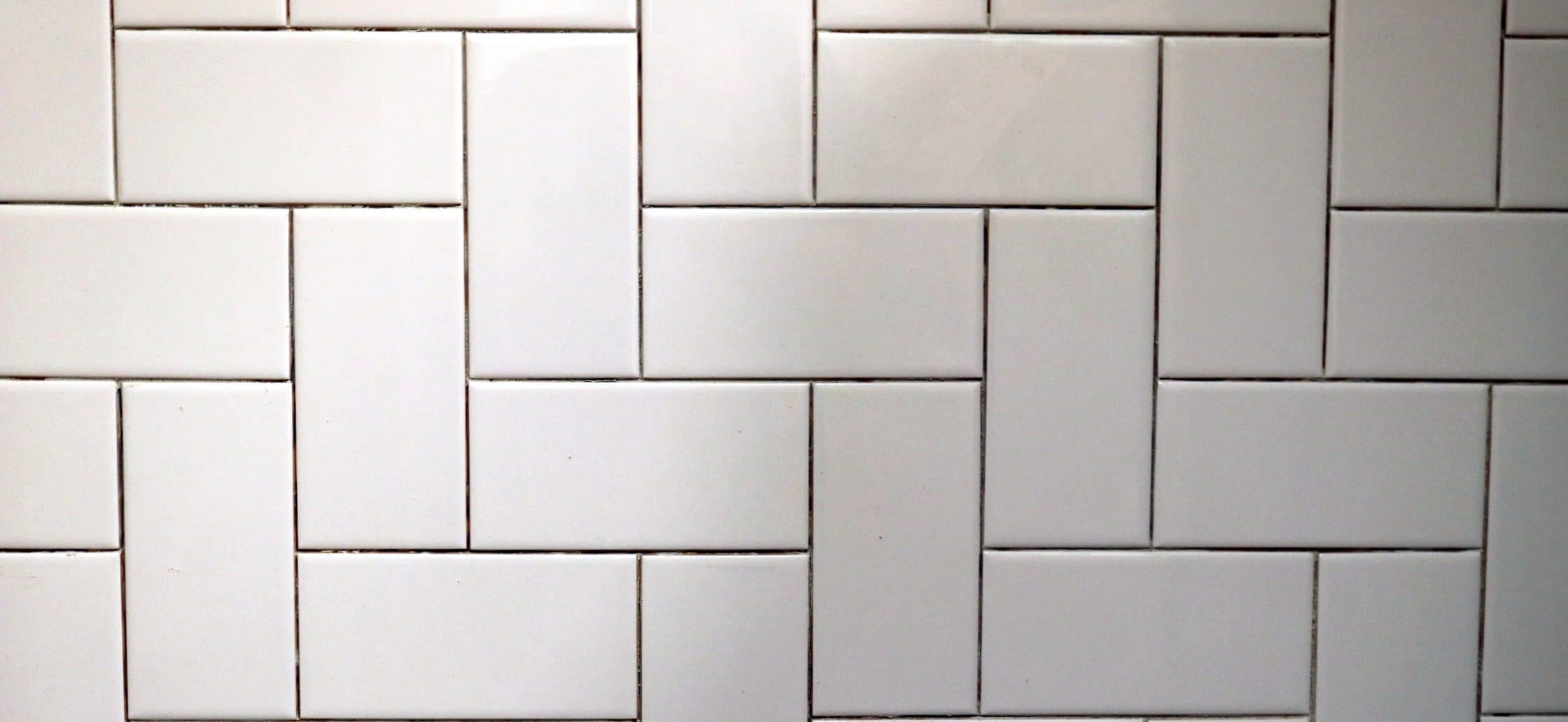When you visit a tile showroom, the options are endless. Breaking the options down into types of tile can be a useful first step to deciding what will work best for your project.
The history of tile starts with fired ceramic, one of the oldest materials humans used to build and create. The ancient fired clay from the ground to make vessels for eating and for storage. They also made tablets for writing (anybody remember cuneiform from your grade school history class?).
While tiles specifically aren’t quite so ancient, ceramic is the first known material for tile. Beyond just the raw clay appearance, however, people began to paint the tiles to create decorative effects. Hand-painted tiles have survived to this day as being some of the most highly sought-after artisanal finish materials available.
Since then, manufacturers have made tile out of all sorts of materials, with a vast array of finishes. Tile installations today have a particular way of bringing past and present together – ancient materials and techniques wrapped in a modern packaging. Tile is durable and attractive on floors, walls, ceilings, and accents against other materials. You may be looking to renovate your kitchen, bathroom, or another room for your home. Rest assured there are many different types of tile to choose from, each with their own unique characteristics.
In this guide, we will explore the various types of tile and their uses. We will also include pros/cons of each type, whether ceramic, porcelain, glass, natural stone etc.
A note on costs: Tile is always one of the more expensive finish options available. However, we wanted to give a sense of installation costs within the tile spectrum. For example, a 12×12 ceramic would be lower cost ($—), while Gauged Porcelain Panels would be higher cost ($$$$). That said, the lowest-cost tile installation is often more expensive than other finish options. A quality installation takes significantly more labor and materials to do correctly, when compared to other flooring/finish options.
Overview
Estimated reading time: 16 minutes
Ceramic Tile
Terracotta and ceramics are the originals of the tile world. Ceramic tiles are made with mixes of various clays. Tile makers then press the mixture into a form and fire it in a kiln. The resulting tile can be painted, glazed, or more recently inkjet printed.
White-bodied ceramic tile, is made from a finer clay mixture. The result is a consistent texture and color, but these tiles don’t withstand being installed on the floor. White-bodied ceramic tiles are often used in wall and ceiling applications, whether on a backsplash, or on a bathroom wall. Classic subway tiles are often made from a white-bodied ceramic. You’ll notice they are lighter in weight, and made of a finer-grained clay.
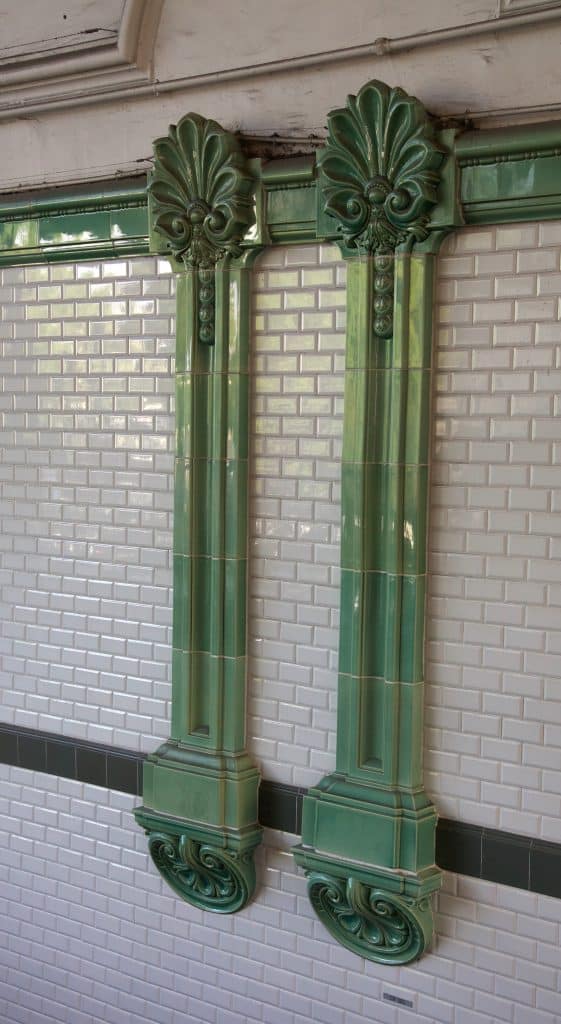
Red-bodied tile, on the other hand is made from a coarser aggregate clay. It typically resists abuse a great deal better than white-bodied ceramic. While red-bodied ceramic is not as strong as a porcelain tile, it is cost-effective. Therefore, it has traditionally been the choice for homeowners and builders looking for good value. These days, however, porcelain tiles can be had for lower and lower prices, so red-bodied ceramic is become less popular.
Ceramic Tile Quick Guide:
Cleaning Ceramic Tile: While a specialty pH-neutral cleaner is always the best choice for cleaning tile, ceramic tile isn’t picky. In a pinch, you can use a dish soap and water. Sometimes the grout can get dirty and discolored, so a specialty cleaner may be in order.
Cost to Install Ceramic Tile: $—
Strength/Durability: 3/5
Porcelain Tile
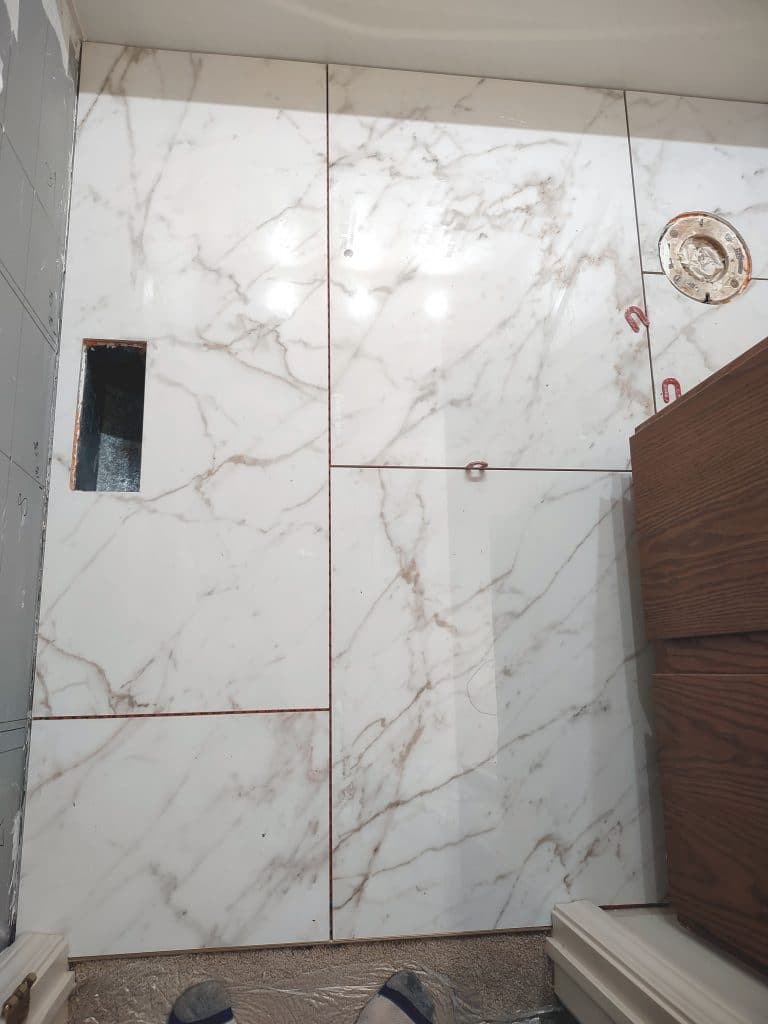
In day-to-day usage, porcelain means an item made of a very fine-grained clay, with a high percentage of kaolin. This is what we think of when talking about porcelain dinnerware/glassware, or decorative home goods. Porcelain goods are prized for their color and translucence.
In the tile industry, however, porcelain has a somewhat different meaning. Porcelain tile, while technically a subcategory of ceramic, in that it’s made of clay, is usually categorized by itself. This is because of its superior water resistance, density, and strength. Certified Porcelain® is a certification program that manufacturers opt in for individual products. The products are tested for their water absorption, and density. If they meet certain criteria during those tests, the products can carry the Certified Porcelain® label. Further testing can reveal a product’s coefficient of friction (slipperiness), abrasion resistance, and strength.
Porcelain tile is generally considered a higher-quality material than a red or white-bodied ceramic, and the cost often reflects this. Clays chosen, the mixing, and firing schedules must be extremely well-managed to result in a porcelain that is consistent and easily-cut on the job site.
Like most tile, porcelain tile is a great choice for high-traffic areas and can withstand heavy traffic without damage. It can also be a good option for outdoor use because of its slip and moisture resistance. In fact, recently thick structural porcelain pavers have joined the market for quality finishes in outdoor living spaces.
Porcelain tile is available in a wide range of colors and styles, including wood-look, stone-look, solid colors, and patterns. It is also available in a variety of sizes and finishes to fully match whichever décor style you choose.
Porcelain Tile Quick Guide:
Cleaning Porcelain Tile: like ceramic tile, porcelain tile isn’t picky about cleaners. While a pH-neutral tile cleaner is ideal, dish soap and water are common in most households and can be used to clean porcelain tile.
Cost to Install Porcelain Tile: $$–
Strength/Durability: 5/5
Gauged Porcelain Tile Panels
Gauged Porcelain Tile Panels (GPTP) are made of porcelain clays, but the tile production process is quite different than normal. New technologies have allowed for the manufacture of very large sizes (usually 5x10ft) to be made.
Rather than a mix of clay being pressed into a form and fired, GPTPs are made using a sintering process. Many fine particles of porcelain clays are formed into large sheets along a row of rollers. Then during the firing process, the particles grow together. The resulting pieces are very thin (as thin as 3mm!), flexible, and extremely consistent in size.
Just like all porcelain tiles, GPTPs are popular for use in residential and commercial spaces because of their durability, versatility, and low maintenance requirements. Because of their size, they are particularly popular for those projects that need a seamless, clean look. There are even people bending them for curved applications.
Gauged porcelain tile panels are relatively new, and take advanced training to install correctly. They are rather difficult to maneuver and need a well-orchestrated team, well-versed in their craft. Because of this, and the significant up-front tooling cost to a contractor, expect the installation to be at the upper-end of the tile installation cost spectrum.
Gauged Porcelain Tile Panels Quick Guide:
Cleaning Gauged Porcelain Tile Panels:
Cost to Install Gauged Porcelain Tile Panels: $$$$
Strength/Durability: 4/5
Natural Stone Tile
The term “natural stone” encompasses many different minerals/stones across the product spectrum. These stones are quarried and cut, then finished into slabs, tiles, or other stone products. For tile installations, homeowners and businesses alike, prize natural stone for the individuality in each tile, and its beauty. Because stone’s finish surface isn’t limited to one printed side, it can further be cut to various shapes for super-custom applications.
Because of the nature of fissures and variance in strength, natural stone does take extra precaution to have a successful installation. The price, both for materials and labor, is often more than a ceramic or porcelain product, but the incredible beauty can often be worth the cost.
Special care needs to be taken with stone, both with application and cleaning. In fact, of the materials listed in this article, natural stones require the most care and maintenance. Regular sealing is required, as well as using specific cleaners. One must also take special care to prevent water from pooling in wet areas.
Natural Stone Tile Quick Guide:
Cleaning Natural Stone Tile: A pH-neutral stone cleaner is a must! There are several on the market, in particular from Miracle and Stonetech. Acidic cleaners, in particular can etch the surface of stone and cause it to lose its sheen.
Cost to Install Natural Stone Tile: $$$-
Strength/Durability: 2/5
Travertine and Limestone Tile
Travertine is a type of natural stone that is formed by water-borne minerals that form a type of limestone. In other words, Travertine is a stone from areas around mineral-rich hot springs (as opposed to seas or oceans, like a pure limestone). It has highly-varied surface patterns, and comes in a variety of browns, creams, and tans, depending on the area it was procured. Know that there are a number of different grades, depending on the density of the material and how porous it is. You may notice places in the tile that have been filled – while this isn’t rare, the better grades of travertine will have better consistency and less need for such fixes.
Limestone is a natural stone that forms through sedimentation in seas and oceans (as opposed to hot springs for travertine). It is known for its soft, neutral colors like beige, cream and grey. Limestone is generally lighter in color and restrained in its patterns than travertine. It is also slightly harder than travertine, which gives it an edge for use in high-traffic areas.
Like all stones, travertine and limestone will require regular gentle cleaning/sealing to prevent staining and to maintain its natural color.
Marble Tile
Marble is a natural stone that is formed when limestone undergoes intense heat without burning, and pressure (ie, underground with no oxygen). This usually happens around volcanic activity or at the edges of moving tectonic plates. The heat causes the crystals in the rock to reorient, and restructure. Depending on what impurities occur in the original limestone, the marble will have various veining patterns, and various colors. Very pure white marble is especially rare and prized as the original limestone needs to have had almost no impurities before undergoing its recrystallization.
Marble is quarried in large blocks, then processed into individual slabs, pieces, or tiles. After trimming to size, the marble tiles are then honed or polished to achieve a matte or glossy surface. Marble tiles are available in a wide range of colors, including white, black, gray, pink, green, and blue, and can be cut to various patterns to create different design styles, from classical to contemporary.
Marble is a rather soft stone, and can be prone to scratches. Owners must be careful not to drop acids like lemon juice or vinegar on marble, as they will etch the marble tile. Marble tiles require regular maintenance, including cleaning and sealing, to keep them looking their best.
Slate Tile
Slate is formed from mudrock, which is in turn formed over the years by flowing water depositing silts and clays. Much like marble, mudrock becomes slate through underground heat and pressure. Slate is especially known for it’s low water-absorption, making it traditionally ideal for roofing as moisture and frost wouldn’t cause any damage.
Slate tile is available in a range of colors, including the typical shades of dark and light grey, but also green, cyan, and purple. Because slate tile is so moisture-resistant, it can be a good choice for wet areas, like showers or bathrooms. Take care to choose a quality slate, however, as lower-quality slates have been known to flake. Furthermore, some slate can be slippery, so doing prior testing of sample pieces is likely a good idea.
Like all stone, slate can be prone to damage if not cared for. However, due to its color, it does tend to age well compared to other natural stones. Take care to regularly clean, and reseal, especially in wet areas.
Granite Tile
Granite is a stone that forms from molten magma (think underground lava) that cools and becomes solid. It is mostly made of silica quartz with other minerals mixed in to create its mottled appearance. Those other minerals vary widely, creating a number of different colors like black, white, shades of gray and beiges, tans, and browns.
Granite is one of the hardest stones used in construction. As such, it is popular in places where wear and damage resistance is useful, like floors, countertops and even roadways in some areas of the world.
Granite is one of the easier stones to care for, but still needs regular maintenance. Beyond regular cleaning, expect to periodically clean and reseal with a granite-specific revitalizer/sealer.
Encaustic and Cement Tiles
While encaustic and cement tiles are technically made of different materials (encaustic tiles are technically ceramic), the general aesthetic and idea behind their making is very similar. Encaustic tiles are made of clays impregnated with color that are built into the body of the tile. Instead of a colored glaze or inkjet print on top of the tile, the color travels all the way through – creating a hard-wearing surface that doesn’t degrade with time. The tile maker combines different colors of clay to create intricate patterns and designs in a mold. The tiles are then hydraulically pressed and fired in a kiln to harden and set the colors.
Encaustic tiles were most often used in older structures. In fact, they reached the peak of their popularity during the Victorian era. Later, however, they fell out of favor as lower-cost glazed ceramics took over the market. The process for making encaustic tiles is very labor-intensive, and the new processes for manufacture of subway tiles decreased the labor needed in production. Slowly, encaustic tiles became a specialty item, rather than the extremely common option it once was. While the encaustic-look seems to be making a come-back with cement tiles, encaustic tiles as were traditionally made are really only made by specialty manufacturers.
Encaustic and cement tiles are known for their unique, decorative patterns and are often used to add visual interest to floors, walls, and other surfaces.
Cement/Encaustic Tile Quick Guide:
Cleaning Cement/Encaustic Tile:
Cost to Install Cement/Encaustic Tile: $$–
Strength/Durability: 3/5
Glass
Glass tile is made from recycled or new glass that is heated until it is molten. Then, the molten glass is pressed into the proper shape, or rolled into sheets for cutting. Some of the smaller pieces are then assembled into mosaics, and attached to fiberglass netting or paper for the tile installer.
Glass tile is known for its reflective and refractive properties, which makes light dance off its surface. It’s particularly prized in pools and a popular choice for backsplashes, accent walls, and other decorative applications in homes.
Glass tile is available in a wide range of colors and styles, but especially popular in small mosaics, and subway tiles. Some glass tiles have a colored coating on the back to give it color, and some use actual colored glass. Installation should be performed by a very qualified tile installer. Inexperienced installers often run into issues with chipped cuts, and visible mortar trowel marks through the glass tile. Furthermore, glass tile expands and contracts significantly more than most tile, which means an installer must plan in advance for ample room for the installation to avoid any cracks in the future.
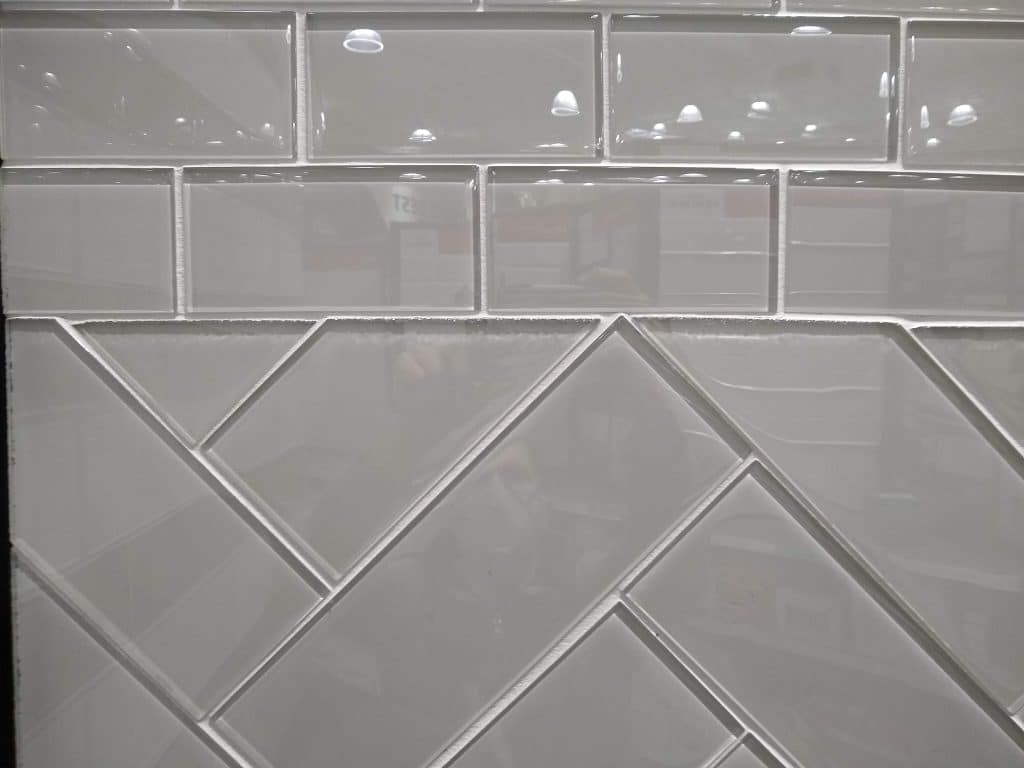
One of the main benefits of glass tile is that it is easy to clean and maintain, as it does not absorb stains or odors. It also doesn’t absorb water, which makes it a good candidate for wet areas. Keep in mind, however, glass is rather slippery, so special care must be taken for choosing glass on a floor.
Glass Tile Quick Guide:
Cleaning Glass Tile: Glass tile is easy to clean with any glass cleaner and a squeegee.
Cost to Install Glass Tile: $$$-
Strength/Durability: 2/5
Quarry
Quarry tile is a type of unglazed ceramic tile that is made from a mixture of clays and ground minerals. The process for making them resembles brickmaking (extruded, then fired at very high temperatures), though the final product is quite a bit tougher than brick, or a run-of-the-mill ceramic. Because it is so durable and absorbs little moisture, it is especially useful in commercial kitchens where it can stand up to the constant wear-and-tear that it is subjected to. There are also “designer” varieties slowly being introduced to the market that homeowners have been gravitating toward for their rustic appeal.
In the United States, quarry tile is mostly available in a square 4″x4″ shape, and in two colors: reddish-brown and gray. Quarry tile requires little maintenance, but in areas prone to lots of spills like kitchens, semi-regular sealing will keep the surface of the tile from staining.
Quarry Tile Quick Guide:
Cleaning Quarry Tile: Quarry tile isn’t picky about cleaning: a mop and bucket is appropriate, but for heavier-duty cleaning, one might use a stiff brush.
Cost to Install Quarry Tile: $$–
Strength/Durability: 5/5
Terrazzo Tile
Terrazzo was traditionally one of the many methods developed over time as a cheaper alternative flooring that could incorporated waste products. Workers threw chips and off-cuts from stonework into a mortar base, creating an full, but uneven surface. That surface was then ground and polished to be flat, a technique that saved significantly on the cost of true stone floors. Terrazzo was especially popular during the early 20th century as it complemented the art-deco architectural movement. With some advances that further increases its strength and longevity, today Terrazzo is one of the best flooring materials available for extremely heavy foot traffic areas, like airports and convention centers.
Terrazzo tile is simply a tile that is make through the terrazzo process. It will often incorporate bits of different stones like marble and granite, as well as glass or even metals. The mortar used is either an epoxy or a traditional white cement, then everything is ground flat, trimmed to size, and polished. Like terrazzo proper, terrazzo tile is durable, though easier to procure for the average homeowner. It is especially appropriate in the restoration of homes with mid-century modern architecture as terrazzo was a common flooring style for the time.
Another advantage of terrazzo tile is its versatility in terms of design. It can be customized with different colors and patterns to create a unique and personalized look. In fact, there are companies that specialize in creating tiles to order, using specified materials, chip size, and tile sizes.
Terrazzo Tile Quick Guide:
Cleaning Terrazzo Tile: Because terrazzo has so many different materials that make it up, it’s important to regularly seal it, and use a pH-neutral floor cleaner.
Cost to Install Terrazzo Tile: $$$-
Strength/Durability: 4/5
Specialty Tile
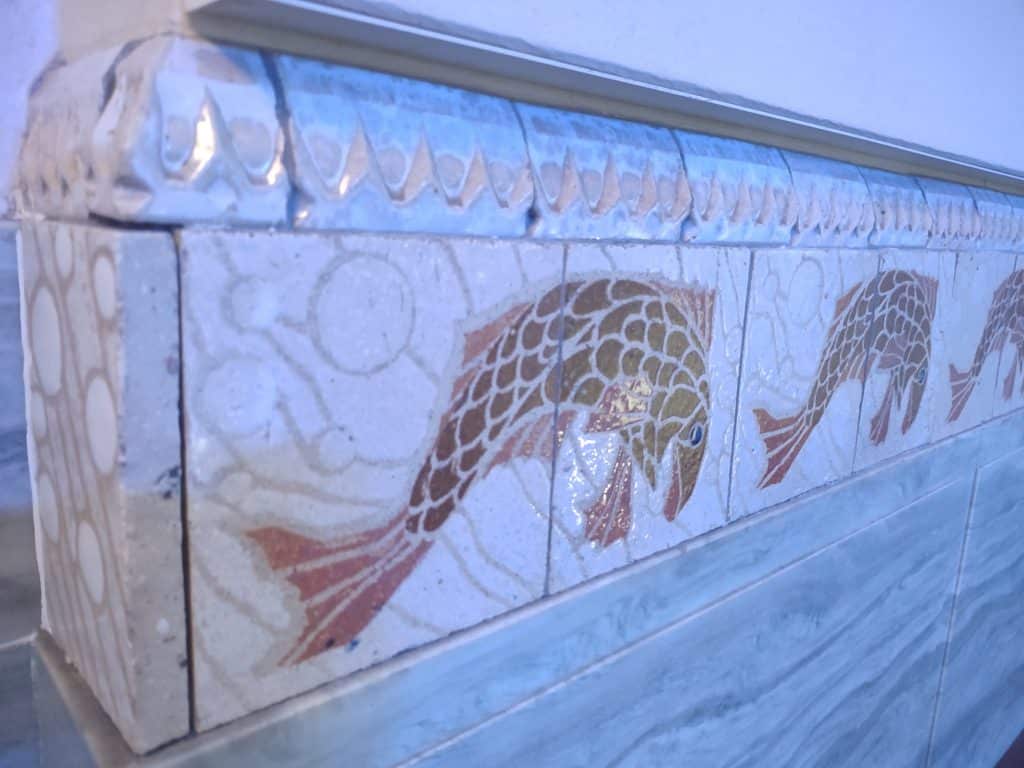
Specialty tiles are available everywhere from artisan studios. They range from custom-made mosaics to 3d tiles to specialty stone that is only available in certain parts of the world. Because the category is so broad, it’s difficult to say anything specific, but the following links may give you some ideas for your own project. We will add more links as we find tiles of interest.
https://petoskeystonetileandmore.com/
Conclusion
There are many different types of tile to choose from, each with its own unique properties and benefits. When selecting tile for your home or business, consider your willingness to maintain it properly, as well as the overall style and aesthetic you want to achieve.
No matter what type of tile you choose, be sure to follow the manufacturer’s recommendations for proper installation and care to ensure a long-lasting and beautiful installation. With proper tile installation and maintenance, your tile should last a lifetime.

